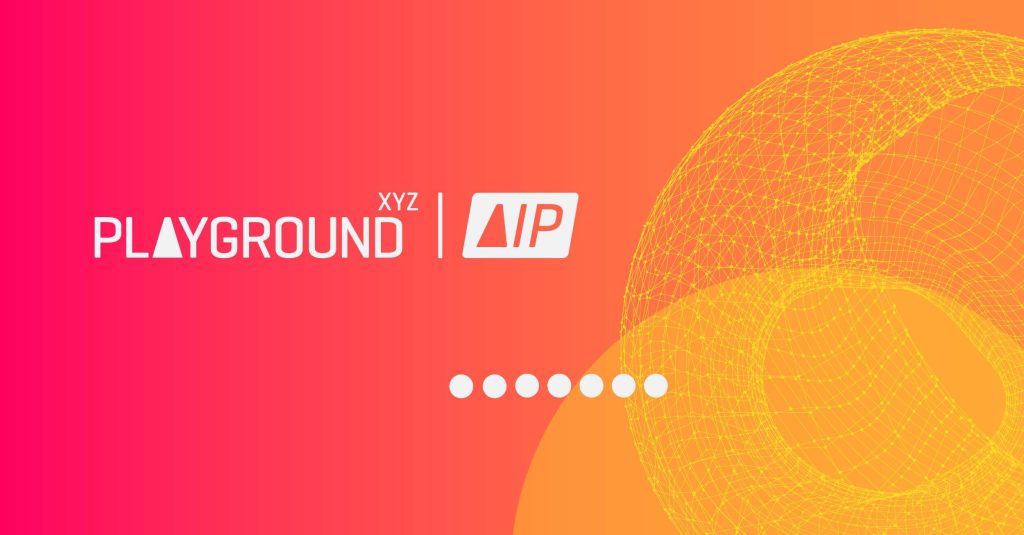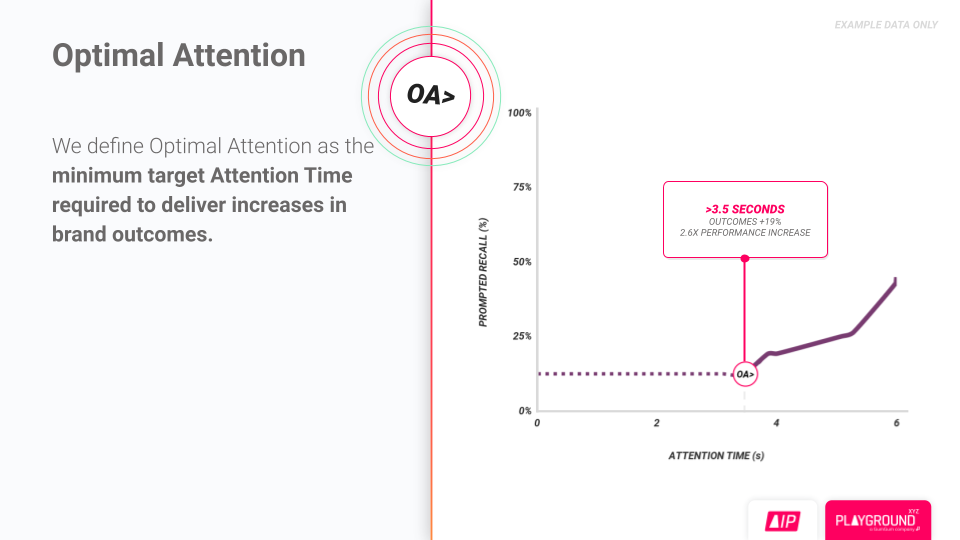Playground xyz, the leading attention measurement and optimisation platform (and a part of GumGum), today announced the results of a groundbreaking new study using its new Optimal Attention framework and its impact on real-world results.

Building on Playground’s metric of Attention Time (the length of time, in seconds, that an ad is directly looked at), Optimal Attention is defined as the minimum target Attention Time required to deliver sustained increases in brand outcomes. It aims to understand how the nature of attention varies across different digital ad campaigns, based on factors like brand market position, creative execution, and desired brand outcomes.
The new study, conducted by Playground xyz’s Lead Scientist Dr. Shannon Bosshard and Chief Scientist Dr. John Hawkins, analyzed behavioral eye-tracking data from approximately 20,000 participants exposed to 55 video ads that ran across Instagram, Facebook, TikTok, and YouTube. This was combined with a neuroscience analysis of 1,800 ads, to understand how consumer attention is shaped at both a conscious and subconscious level.
During the study, each participant was presented with a newsfeed featuring ads on a single social media platform and asked to use it as they usually would for a 3-5 minute period. Participants then completed a short survey on brand outcomes including awareness, recall, consideration, and purchase intent. Results were then interpreted in tandem with neuroscientific analysis.

Top insights from the study demonstrate that:
- Attention drives rapid upper and mid-funnel outcomes: Playground’s research shows that consumer awareness, recall, and consideration are all strongly influenced by core attention metrics. Increases in the majority of outcomes also occur quickly, with most seeing a lift prior to 10% of an ad having been watched.
- But Optimal Attention differs for each brand outcome: On average, it takes 1.4 seconds of consumer attention to drive a 10% lift in brand awareness at the top of the engagement funnel. For mid-funnel results, however, a longer attention threshold is required: 1.6 seconds for consideration and 3.9 seconds for prompted recall. The level of lift achieved also differs significantly per outcome.
The takeaway for brands here is that attention plays an integral role in moving consumers toward a purchase – but not all attentive seconds are created equally. The Optimal Attention threshold can help define how much attention is needed, depending on the target outcome and whether a campaign is targeting upper, mid, or lower-funnel results.
- Creative execution is the primary driver of Optimal Attention: A brand’s ability to drive changes in consumer behavior is directly related to how strong its creative messaging is.
In a massive 94% of ads analyzed in the Playground study, the thresholds for Optimal Attention were notably different depending on what creative was used – versus the platform that content appeared on (Instagram, Facebook, TikTok or YouTube), which had less impact on performance. Ultimately, the way attention is paid to a specific creative – rather than the ad environment – is what determines the lift in specific brand outcomes.
- Neuroscience reinforces the power of the creative: Unlike traditional methods, neuroimaging doesn’t rely on conscious responses – it measures the brain’s activity as consumers encounter advertising. And in Playground’s study, brain activity data supports the pivotal role of brand creative. Results from over 150 lab sessions indicate that creative content significantly influences memory encoding; which, in turn, impacts critical marketing goals such as brand loyalty and sales.
- Brand size matters: Larger brands with a baseline awareness above 75% are almost 1.5 times more likely to get lift with an Optimal Attention threshold of below 2 seconds. They’re also almost twice as likely to have an Optimal Attention threshold below 1 second. This is probably the consequence of pre-existing brand recognition and the use of distinctive assets (e.g. strong visuals, unique colors or audio jingles). Both of these require less attention to “jog” the mind of the consumer, triggering strong responses.
“Our new dataset is the best evidence we have, to date, that explicitly shows that different brand outcomes and creative executions ‘convert’ attention differently,” explains Rob Hall. “Brands can be empowered to craft more impactful campaigns by understanding how exactly attention affects customers at different stages of the marketing funnel. This, along with greater investment in strong creative development, can powerfully influence specific consumer behaviors, and help amplify measurable results.”
Source: Playground xyz

You must be logged in to post a comment Login